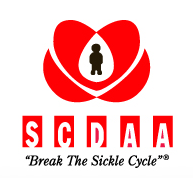Sickle Cell Timeline
1910 – Herrick provides the first formal description of sickle cell anemia when he reports that the blood smear of a dental student at the Chicago College of Dental Surgery contains “pear-shaped and elongated forms.”
1927 – Hahn and Gillespie associate the sickling of red blood cells with low oxygen conditions.
1940 – Sherman reports that the sickling of red blood cells in the absence of oxygen is caused by a change in the hemoglobin molecule structure.
1948 – Watson suggests that the presence of fetal hemoglobin in the red blood cells of sickle cell newborns is the reason they do not show disease symptoms.
1949 – Noted physical chemist Linus Pauling and associates publish “Sickle Cell Anemia, a Molecular Disease” in Science. This paper explains how protein electrophoresis was used to show that sickle cell hemoglobin differed in structure from normal hemoglobin. This was the first time that the cause of a disease was linked to a change in protein structure.
1956 – Vernon Ingram and J.A. Hunt sequence hemoglobin and discover that the change of a single amino acid in the protein sequence is the cause of sickle cell anemia.
1978 – Flavell prepares maps of the human beta and delta globin genes.
1995 – Upon the completion of the Multicenter Study of Hydroxyurea in Sickle Cell Anemia, Charache reports that the anticancer drug hydroxyurea is the first to reduce the frequent, painful complications that characterize sickle cell disease.
1997 – Periodic blood transfusions in children with sickle cell disesase who are at risk for stroke shown to reduce risk of stroke by 90%.
1998 – The Food and Dri=ug Administration approves hydroxyurea for sickle cell disease. treatment in adults based on NHLBI sponsored study
2002 – The Health Resources and Services Administration Newborn Screening Program starts
2004 – Study finds children with sickle cell disease at high risk for stroke who stop receiving blood transfusions after 30 month minimum retrun to high risk of stroke.
US Postal Service issues Sickle Cell Disease Awareness Stamp
2006 – NHLBI launches Sickle Cell Disease Clinical Research Network
2008 – United Nations passes a resolution declaring World Sickle Cell Disease Day
2009 – Study in NHLBI laboratory finds modified blood adult stem cell transplant regimen reverses sickle cell disease in nine of 10 adults severely affected by disease.
2009 – The Sickle Cell Disease Association of New Jersey is founded.
2010 – 100th Anniversary of Herricks’ paper that first identified sickle cell disease.
The Sickle Cell Association of New Jersey (SCANJ), a 501c3 non profit community based agency is founded on September 1, 2009 to assist the sickle cell community, especially adults, with non-medical needs such as, support groups, transition, education, access to research, resource sharing, family follow up and other programs that improve their quality of life.
SCANJ works in partnership with health care professionals and is open to individuals, sickle cell treatment centers, health care providers and organizations that support sickle cell disease services in the State of New Jersey.








